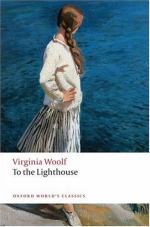|
This section contains 10,368 words (approx. 35 pages at 300 words per page) |

|
SOURCE: “‘To the Lighthouse’: Death, Mourning, and Transfiguration,” in Literature and Psychology, Vol. XXI, No. 3, 1971, pp. 115–31.
In the following essay, Corsa discusses the ways in which To the Lighthouse follows the typical psychological patterns of mourning and Woolf's own efforts to come to terms with the persistent presence of “death in life.”
In this present year of 1970 Virginia Woolf's To The Lighthouse has had two interpretive studies that seem to me to have rather impressively explored two important levels of the novel: the conscious and the unconscious. Jean O. Love's Worlds in Consciousness1 examines Mrs. Woolf's novels in the light of developmental cognitive psychology and devotes two chapters (11 and 12) to a close scrutiny of To The Lighthouse; Harvena Richter's The Inward Voyage2 analyzes what she calls “subjective modes” in the novels making use of Freud and Lesser as well as of Piaget, Cassirer, and Langer. It will be...
|
This section contains 10,368 words (approx. 35 pages at 300 words per page) |

|


